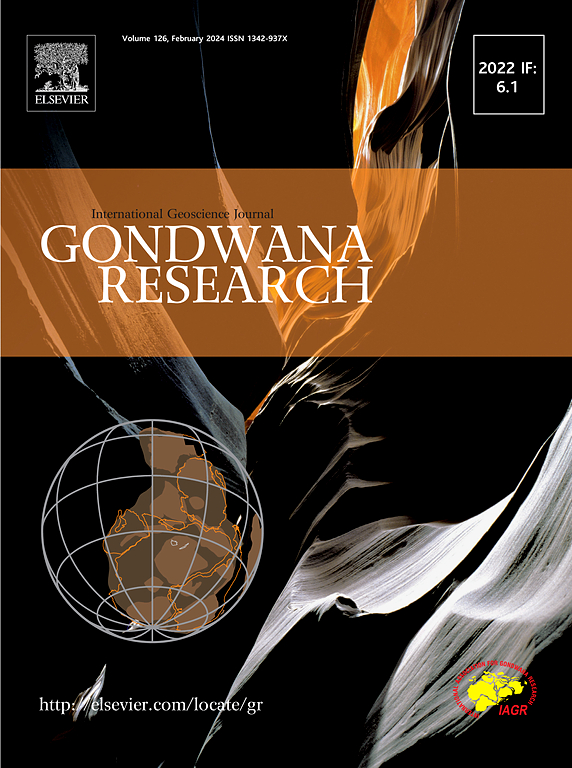First boron isotopes in the southern Jilin TTG series uncover a Neoarchean oceanic arc in the eastern North China Craton
IF 7.2
1区 地球科学
Q1 GEOSCIENCES, MULTIDISCIPLINARY
引用次数: 0
Abstract
The Neoarchean evolution of the eastern North China Craton (NCC) is still controversial. This study presents the first B isotopes, together with zircon U-Pb-Hf isotopes and whole-rock geochemical analyses, for the TTG and dioritic series in the Baishan area of the southern Jilin region. LA-ICP-MS zircon U-Pb results uncover the Neoarchean magmatic activities, including granodioritic gneisses (2648 ± 10 Ma and 2622 ± 8 Ma), and quartz dioritic gneiss (2539 ± 7 Ma). The 2.65–2.60 Ga TTG series exhibit intermediate calc-alkaline characteristics, with relatively lower Th/La ratios (0.11–0.41) and positive zircon εHf(t) values (+3.73 to +7.93), suggesting that the TTG series were likely derived from partial melting of mafic lower crust. By contrast, the 2.54 Ga dioritic series show positive Zr, Hf and Eu anomalies, with relatively lower Nb/Zr ratios (0.013–0.028) and εHf(t) values (+2.00 to +5.49), indicating that they were possibly produced by mixing of the mantle-derived magma and crustal melts. Importantly, the 2.65–2.60 Ga TTG series are characterized by positive whole-rock δ11B values of +4.11 to +15.08 ‰, resembling the Izu-Bonin-Mariana oceanic arc and South Sandwich Island arc volcanic rocks. The formation of these TTG rocks is attributed to 11B-rich fluids released by subducted oceanic slab and subsequent metasomatism of the subarc mantle wedge. Unlike the oceanic arc TTG series, the 2.54 Ga dioritic series exhibit lighter whole-rock δ11B values of −4.23 to −4.50 ‰, reflecting an arc-continental collision induced by slab breakoff and mantle-derived magma upwelling. Integrated with previous studies, it suggests that the subduction-collision process in the eastern NCC resulted from the co-evolution of oceanic arc and continental margin arc.

求助全文
约1分钟内获得全文
求助全文
来源期刊

Gondwana Research
地学-地球科学综合
CiteScore
12.90
自引率
6.60%
发文量
298
审稿时长
65 days
期刊介绍:
Gondwana Research (GR) is an International Journal aimed to promote high quality research publications on all topics related to solid Earth, particularly with reference to the origin and evolution of continents, continental assemblies and their resources. GR is an "all earth science" journal with no restrictions on geological time, terrane or theme and covers a wide spectrum of topics in geosciences such as geology, geomorphology, palaeontology, structure, petrology, geochemistry, stable isotopes, geochronology, economic geology, exploration geology, engineering geology, geophysics, and environmental geology among other themes, and provides an appropriate forum to integrate studies from different disciplines and different terrains. In addition to regular articles and thematic issues, the journal invites high profile state-of-the-art reviews on thrust area topics for its column, ''GR FOCUS''. Focus articles include short biographies and photographs of the authors. Short articles (within ten printed pages) for rapid publication reporting important discoveries or innovative models of global interest will be considered under the category ''GR LETTERS''.
 求助内容:
求助内容: 应助结果提醒方式:
应助结果提醒方式:


